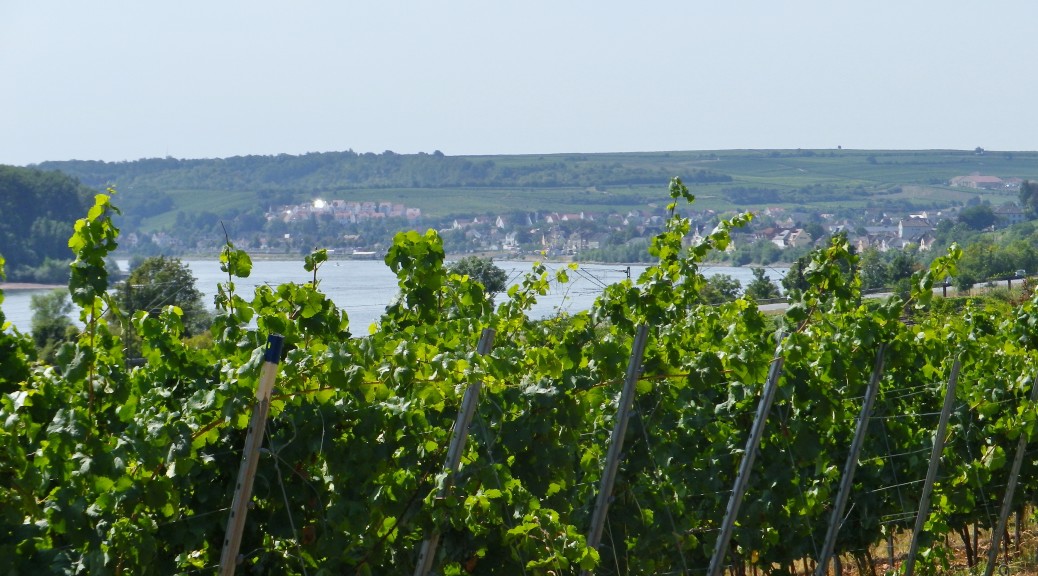Rather than referring to the cost of the wine here (although some quality producers offer great Rheinterrassen wine at very reasonable prices), today’s post title refers to the Song of the Nibelungen, that epic poem of feasts with wine, hosted by powerful kings with brave knights, and a fearless slayer of dragons guarding vast treasures.
The poem (later adapted and set to music in Wagner’s Ring Cycle), tells of the life and death of the dragon-slaying hero Siegfried, and his relationship with the Burgundians. Much of the action takes place in and around the city of Worms “on the Rhine”, which is home to the court of the Burgundian king Gunther and his wife and queen Brunhild. (It is also now home to several sculptures of dragons, commemorating this facet of the poem.)
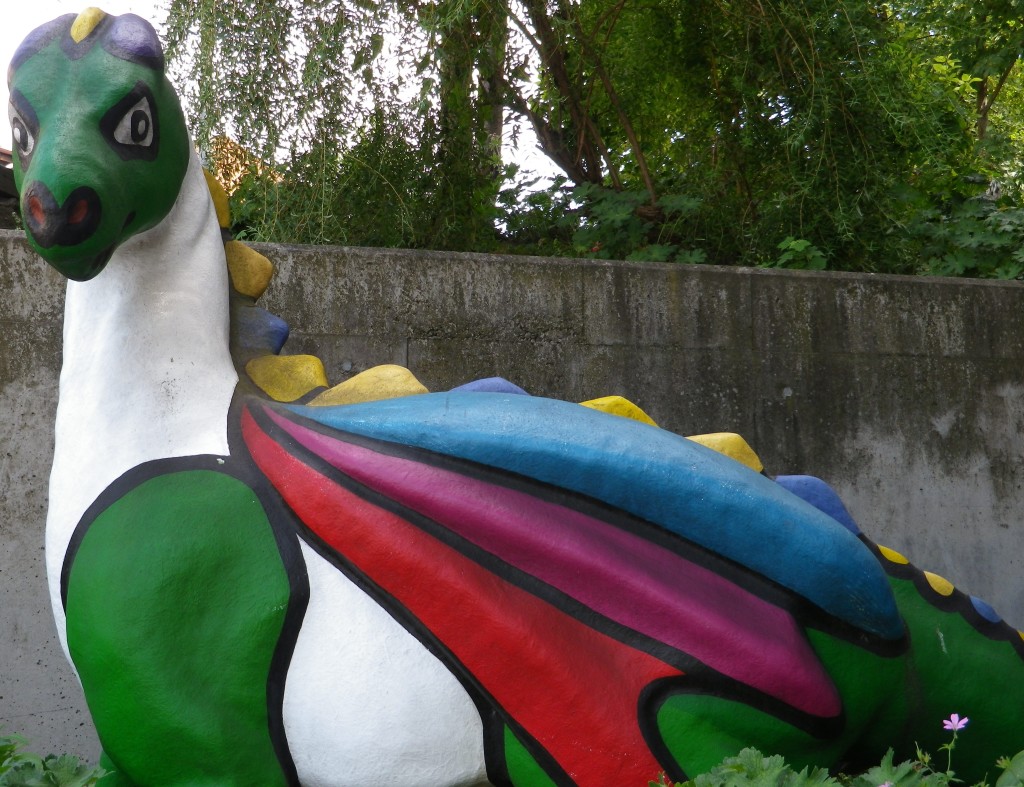
The Rheinterrassen Route begins in this fabled city of Worms. The city began as a Celtic settlement, which was then Romanized. Burgundians, migrating from the Baltic Sea, did indeed hold this area as their main settlement in the 400s. The Frankish kings, who controlled this area next, undoubtedly established a church here, which ultimately became the seat of an important bishopric within the Holy Roman Empire. Shortly after the start of this bike trail, the great Romanesque cathedral of Worms comes into view. In the poem, the church appears in at least two scenes. In one, the narrators tells of the great noise of the bells ringing from the dome. It seems to be setting a tone as foreboding as some of the Ring Cycle music. In the other, as the party arrives from the fields around Worms, two queens argue over who has the higher rank, thus entitled to enter the cathedral first. Set on a rise, its medieval-looking red sandstone towers outlined sharply against the sky, it seems a fitting monument to the spirit and the drama inherent in the poem and the opera.
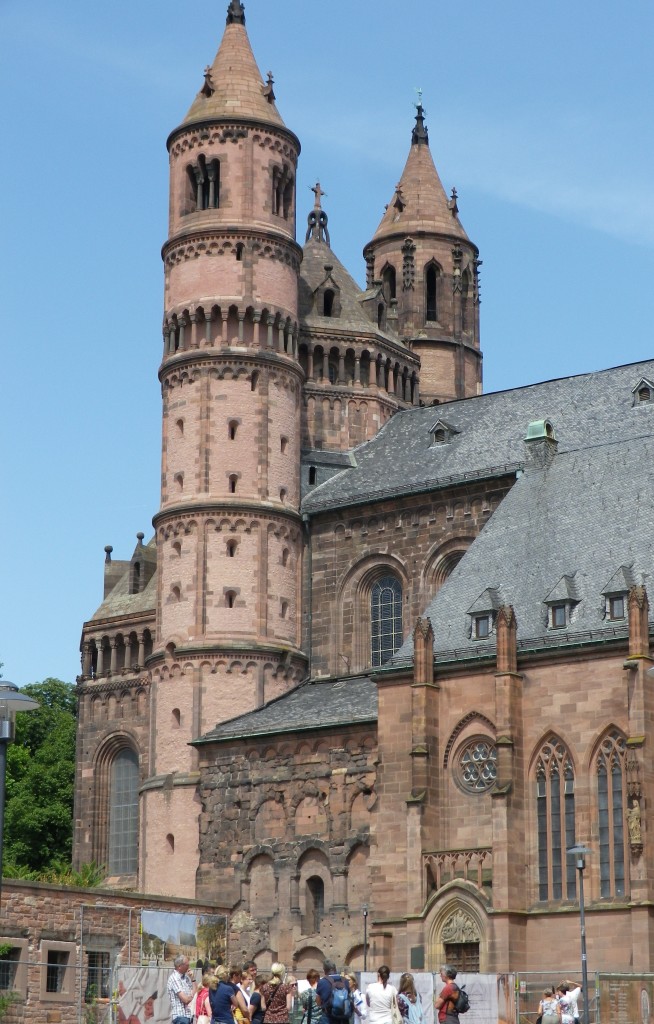
As the trail leads out of town, first on streets, then on bike path, it comes quickly to countryside. Nibelungen fans might even imagine these the fields around Worms where the two ill-fated queens first met. Small garden holdings soon give way larger fields and to vineyards.
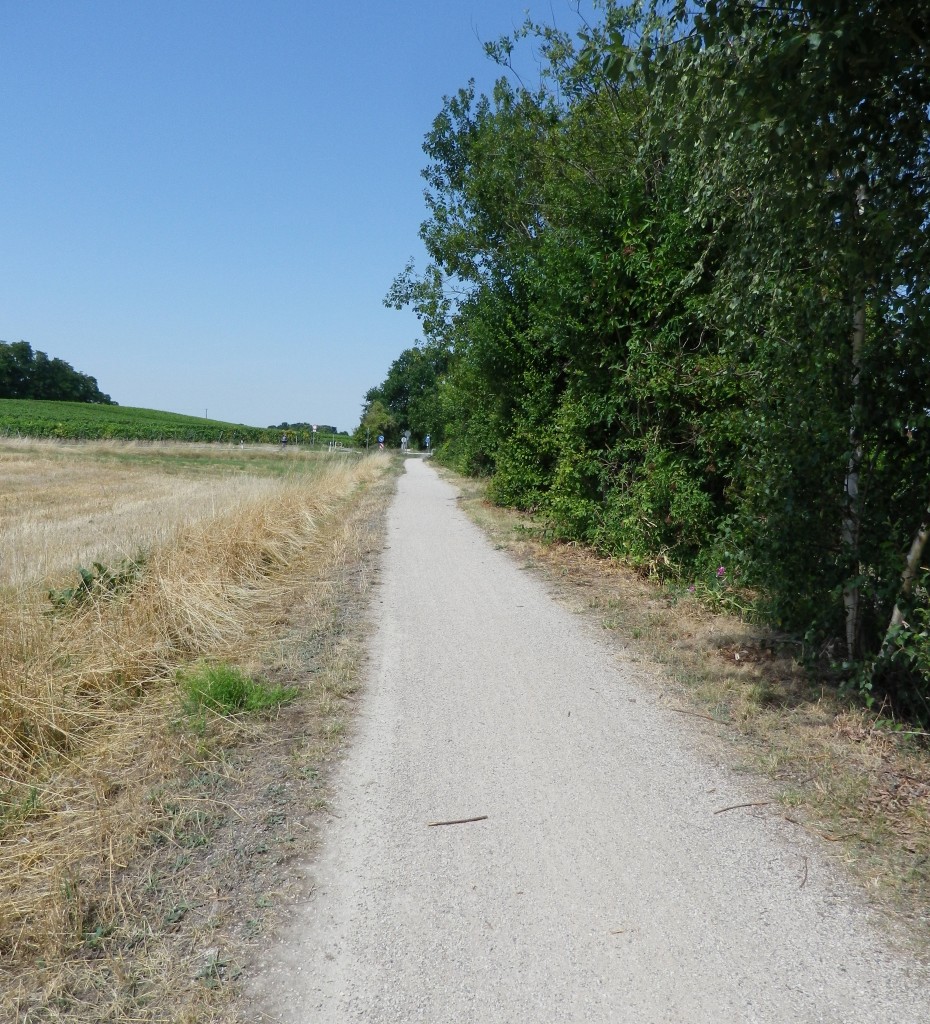
In the song of the Nibelungen, whenever these nobles and knights feast, it is with wine. “Rhine” wine is specifically mentioned. This area of the Rheinhessen region is famous for the Rheinterrassen viticultural district. The “Terrassen” are red sandstone terraces formed by nature, on the western banks of the Rhine River. This area of sloping vineyards begins just outside of Worms, and continues almost all the way to Mainz.
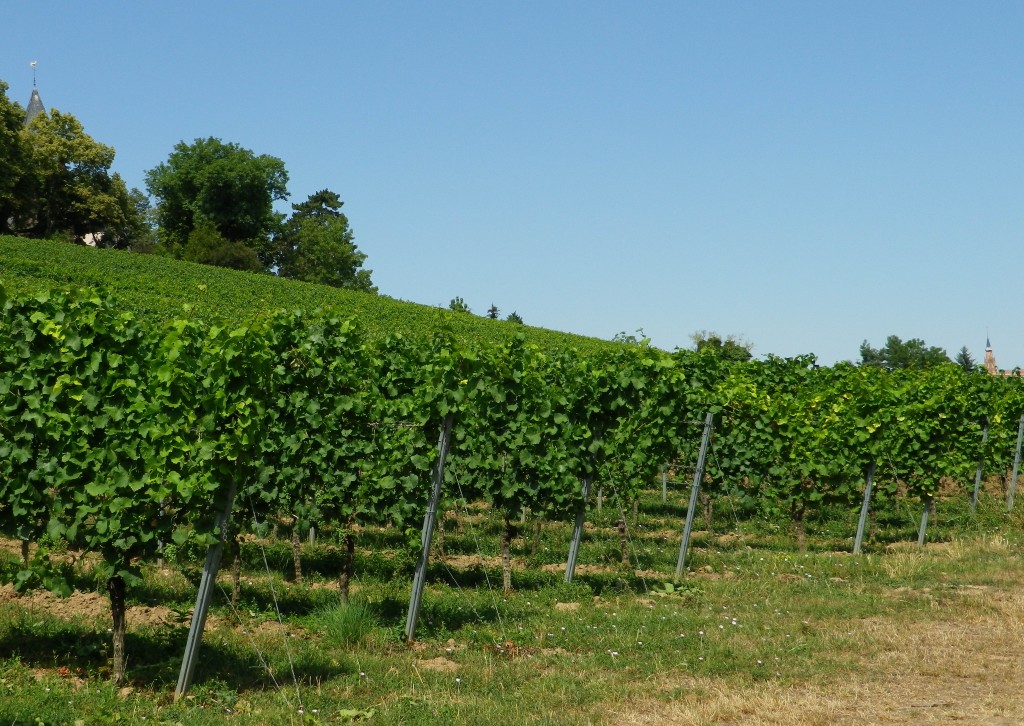
Following the natural line of the Rhine Terraces, the bike trail proceeds north toward Mainz. Riding through almost exclusively vineyards, you quickly realize how important viticulture is to the region. The vineyard segments are punctuated by small villages. After Mettenheim and Alsheim and their vineyards, comes the picturesque village of Guntersblum with its famous Kellerweg: a half-mile long street lined by dozens of cellars. Nowadays, it serves as the site of its annual open cellar festival. (Sadly not ongoing as I passed through.)
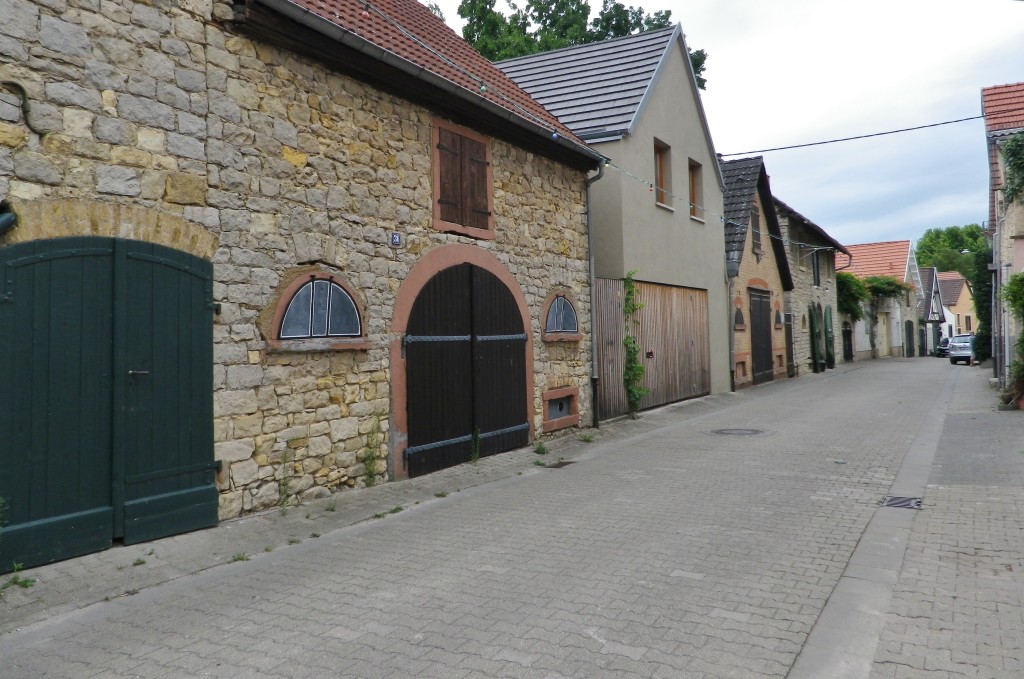
Skirting Ludwigshoehe through its vineyards, the trail arrives in Dienheim and Oppenheim. Oppenheim was clearly an important town in the early middle ages. Charlemagne assigned it to Lorsch Abbey, possibly for exploiting the Oppenheim vineyards. It later gained status as a free imperial city. It is as impressive for what you see – its imposing Gothic church; as for what you don’t see – its kilometers of underground cellars beneath the heart of the old city center. (The cellars are visible only with a guided tour, offered by the town tourism office.) Photogenic, and with a long-documented history, Oppenheim is worth a visit.
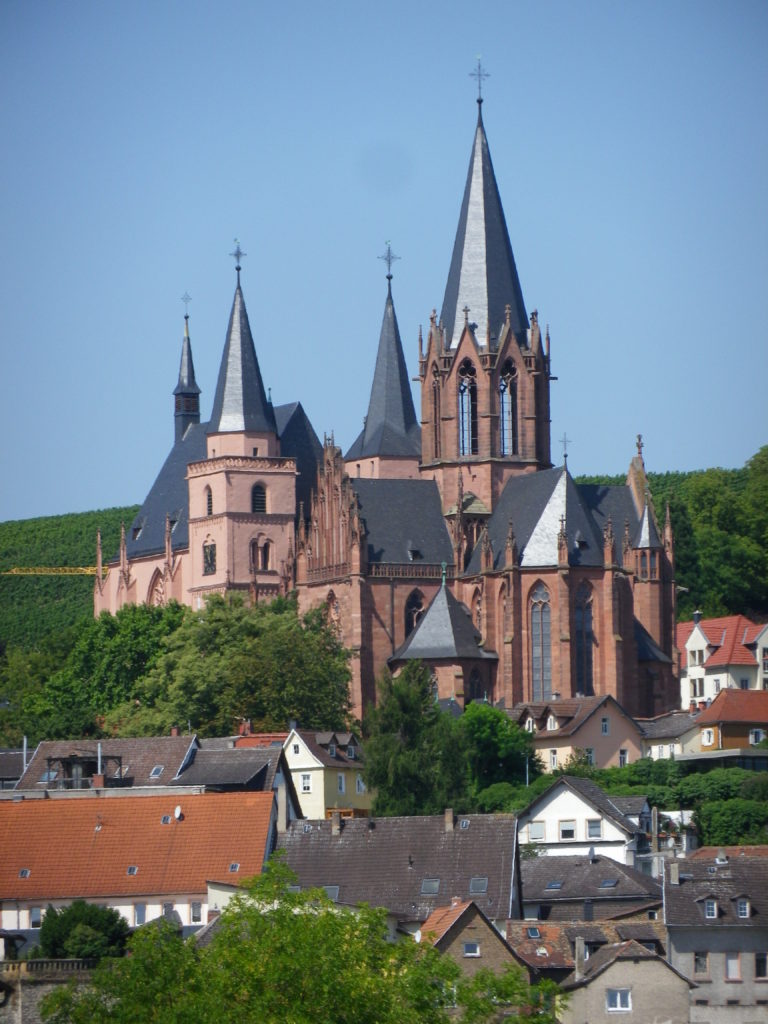
Nierstein, the next town, is also worth a visit. In addition to its charming historic center, filled with pubs and wine-bars offering some of the area’s best wines, it focuses heavily on wine tourism. Every second Sunday of the month the local vintners offer a short walking tour, with tastings, of the famous Roter Hang, a massive red sandstone slope, site of several of the most famous vineyards in the district, such as Hipping, the Oelberg and Pettental.
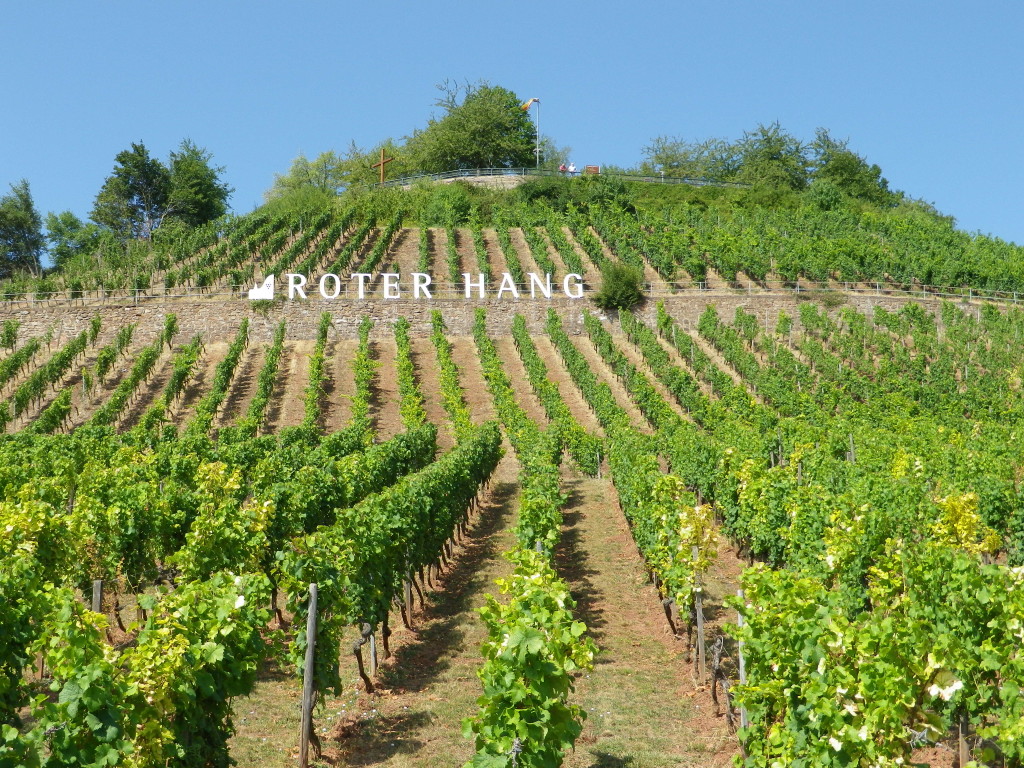
The trail follows in the shelter of the glorious Roter Hang, within view of the Rhine. A barge moved lazily downriver. Enjoying these views for a few kilometers, the trail reached Nackenheim, home to the famous Rothenberg vineyard, and then Bodenheim, the wine village proudly proclaiming itself as “gateway” to the Rheinterrassen, with a gate, no less, framing the entrance to its vineyards.
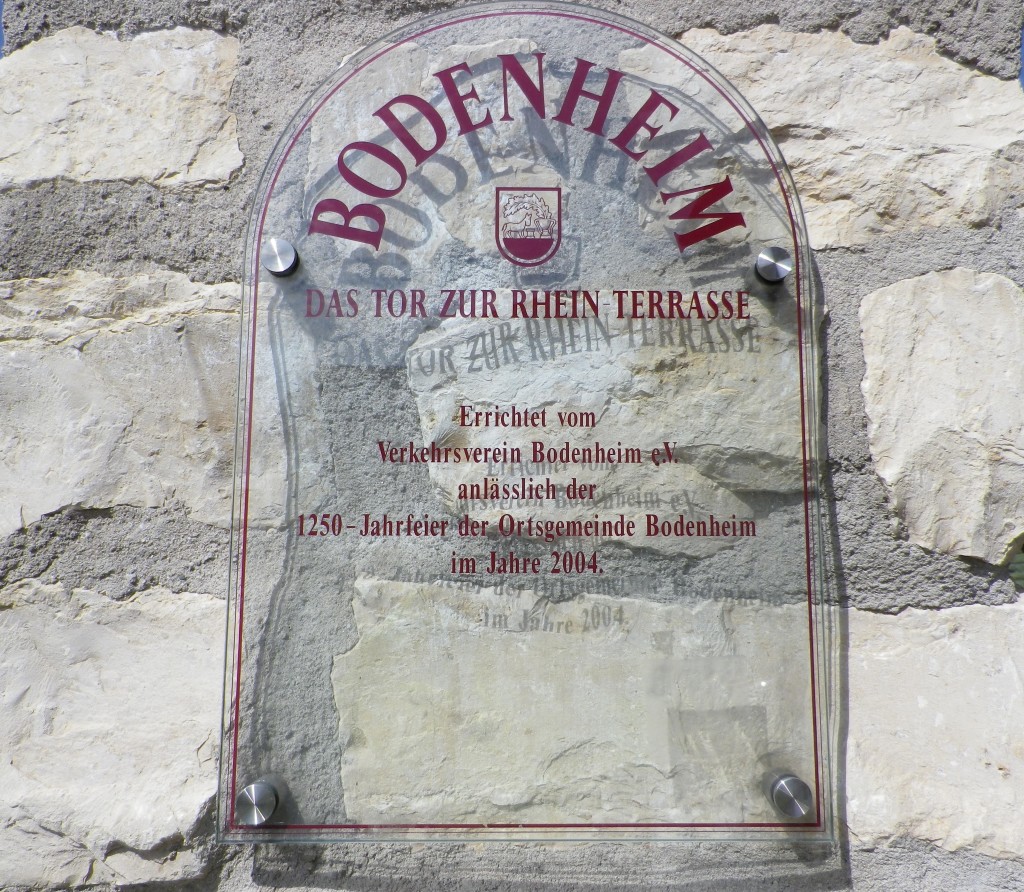
While the trail concludes with a ride through the streets of Laubenheim-Mainz, it is an easy ride of about 5 kilometers/3 miles further along the Rhine River to Mainz’ center. Mainz has a fascinating history, from Romans to Gutenberg, with museums and archeological sites to match. Like Worms, it is home to one of three Imperial cathedrals, the third being in Speyer, in yet another Rhine wine region, an hour’s drive south of Mainz. Of course, you could cycle there on the famous Rhine Bicycle Trail…but, maybe some other day.
